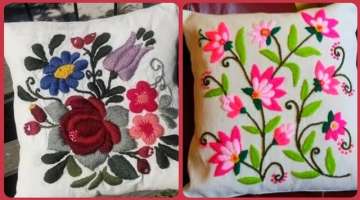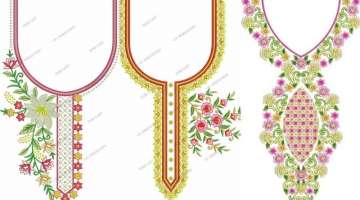12 Photos Of Strange Animals You Probably Didn't Know Exist
Most of us don’t have the idea of animal species that are on the Earth today, and we even get surprised as we find out there are some cool animals we haven’t heard of before.
- 1 | 13

Even if you're a dedicated animal enthusiast, you can't honestly expect to know all of the 1,367,555 non-insect animal species, but there are humans who have explored only 5 percent of the oceans, so probably there are many more scary sea creatures lurking in the deep. These new species might be discovered by the time you finish reading this text, so there will always be some new surprises for us out there.
- 2 | 13

The Maned Wolf: The maned wolf is the largest canid of South America. It looks more like a long-legged fox than a wolf. Genetic studies show that it is neither fox nor true wolf, but a distinct species. It is the only member of its genus, Chrysocyon. Maned wolf urine has a powerful aroma, reminding many humans of the way skunks smell. Having evolved to live in high grass savannas, maned wolves have a thick red coat, long black legs and tall, erect ears. The maned wolf is the largest canid of South America. It looks more like a long-legged fox than a wolf. Genetic studies show that it is neither fox nor true wolf, but a distinct species. It is the only member of its genus, Chrysocyon. Maned wolves live in monogamous pairs sharing a 10 square mile (26 square kilometer) territory.
- 3 | 13

Dumbo Octopus: Often called the cutest octopus in the world, the Dumbo octopus has fins on its mantle that look like the huge ears of Dumbo the Elephant. The dozen or so species that make up Grimpoteuthis are called Dumbo octopuses because of the two large fins—one on either side of the mantle—that protrude like ears. Add in the octopus's small size (generally around eight inches), relatively short arms, bell-shaped body, pale coloring, and tendency to hover over the seafloor, and you've got a cephalopod that's often called the cutest octopus in the world.
- 4 | 13

Patagonian Mara: Patagonian maras may walk, hop in a rabbit-like fashion, gallop or stot — a unique form of locomotion typically exhibited by ungulates, where the animal bounces on all fours. These maras travel in mated pairs, with the male aggressively protecting his mate from rivals and predators. Patagonian maras inhabit central and southern Argentina. They prefer arid grasslands and brush lands with a great deal of open space. The home range of a mara pair can fluctuate greatly depending upon food availability; these drifting ranges typically amount to 242 acres (98 hectares). Maras move in a variety of ways. They may walk, hop in a rabbit-like fashion, gallop or stot — a unique form of locomotion typically exhibited by ungulates, where the animal bounces on all fours. Patagonian maras can live for approximately 14 years in human care. Their lifespan in the wild is unknown.
- 5 | 13

Lamprey: The sea lamprey an ancient Atlantic fish that wreaked havoc on the Great Lakes—may be America's first destructive invasive species. The rasping mouth of the sea lamprey, an infamous Great Lakes invader. Among the most primitive of all vertebrate species, the sea lamprey is a parasitic fish native to the northern and western Atlantic Ocean. Due to their similar body shapes, lampreys are sometimes inaccurately called "lamprey eels." Unlike "bony" fishes like trout, cod, and herring, lampreys lack scales, fins, and gill covers. Like sharks, their skeletons are made of cartilage. They breathe through a distinctive row of seven pairs of tiny gill openings located behind their mouths and eyes.
- 6 | 13

Irrawaddy Dolphin: Irrawaddy dolphins are found in coastal areas in South and Southeast Asia, and in three rivers: the Ayeyarwady (Myanmar), the Mahakam (Indonesian Borneo) and the Mekong. The Mekong River Irrawaddy dolphins inhabit a 118-mile stretch of the river between Cambodia and Lao PDR and are scarce—just 92 individuals are estimated to still exist. These dolphins have a bulging forehead, short beak, and 12-19 teeth on each side of both jaws.
- 7 | 13

The Gerenuk: The gerenuk, whose name means "giraffe-necked" in Somali, is an exceptionally long-necked antelope. Their head is small for their size, but their eyes and ears are large. Only the males have horns, which are stout and heavily ringed, and they have a more heavily muscled neck than the females do. They have a coat that is brown on the upper back and lighter on the sides. The short tail looks longer as it ends in a tuft of black hair. Like many other gazelles, these large antelopes have preorbital glands in front of the eyes that emit a tar-like, scent-bearing substance they deposit on twigs and bushes to mark their territory. They also have scent glands on their knees that are covered by tufts of hair and between their split hooves.
- 8 | 13

Dugong: Dugongs are cousins of manatees and share a similar plump appearance, but have a dolphin fluke-like tail. And unlike manatees, which use freshwater areas, the dugong is strictly a marine mammal. Commonly known as "sea cows," dugongs graze peacefully on sea grasses in shallow coastal waters of the Indian and western Pacific Oceans.
- 9 | 13

The Fossa At first glance, a fossa looks like some kind of cat, monkey, or weasel. It has paws with claws like a cat, a long tail like a monkey, and round little ears like a weasel, so it's easy to be confused! Although it shares some adaptive similarities with cats, the fossa is closely related to the mongoose and civet. Its coat is short and dense, usually a rich brown color with a golden tinge and a lighter-colored belly. The fossa's tail makes up about half of the animal's length.
- 10 | 13

The Babirusa: The babirusa has been called "a wild pig with a dental problem." They have remarkable tusks or canine teeth that can grow right up through the skin in their snout and curve back toward their forehead. The word babirusa means "pig deer" in the Malay language, as their wild-growing tusks are reminiscent of deer antlers. Babirusas have barrel-shaped bodies with deer-like legs and bristly skin. They are a dull gray or brownish in color and appear naked or hairless. They are about 2 feet tall and 3 feet long and can weigh over 200 pounds.
- 11 | 13

Sunda Colugo (Galeopterus variegatus): There is not much information available on the distribution of the Sunda colugo (Galeopterus variegates) in Malaysia, despite it being one of only two known species in the order Dermoptera. Data on the presence of the Sunda colugo and the vernacular names used by various ethnic groups throughout Malaysia were collected and compiled from various primary and secondary sources. There were 27 locations from Peninsular, 11 locations from Sabah and 34 locations from Sarawak that reported the presence of the Sunda colugo throughout Malaysia. The various ethnic groups of Malaysia adopted 37 different vernacular names to describe the Sunda colugo. This baseline data can be useful for the management authorities in conducting periodic monitoring and will enhance our knowledge of the population dynamics of the Sunda colugo in Malaysia.
- 12 | 13

Tufted Deer: Tufted deer are a small deer characterized by their distinctive tuft of black hair on their forehead. The males' antlers are small spikes, which rarely protrude beyond the tuft of hair. However, the deer's most striking feature may be the male's fang-like canines. The Tufted deer's body has a deep chocolate brown coloration on the upperparts and is white below, and the coat consists of coarse hairs, almost like spines, which give it a somewhat shaggy appearance. The tail has a white underside which can be seen when the deer runs, holding its tail up.
- 13 | 13

Superb Bird of Paradise: Birds-of-paradise have some of the world's strangest and most elaborate courtship displays. In the rainforests of New Guinea, for instance, the male superb bird-of-paradise (Lophorina superba) puts on the now-famous bouncing "smiley face" dance routine, spreading out its black feather cape in an oval shape, until all that's visible in the pitch blackness of its body are its bright blue-green breast plate and shining blue eyes. The male then hops around the female in circles, hoping to win her over.
Related Galleries



















